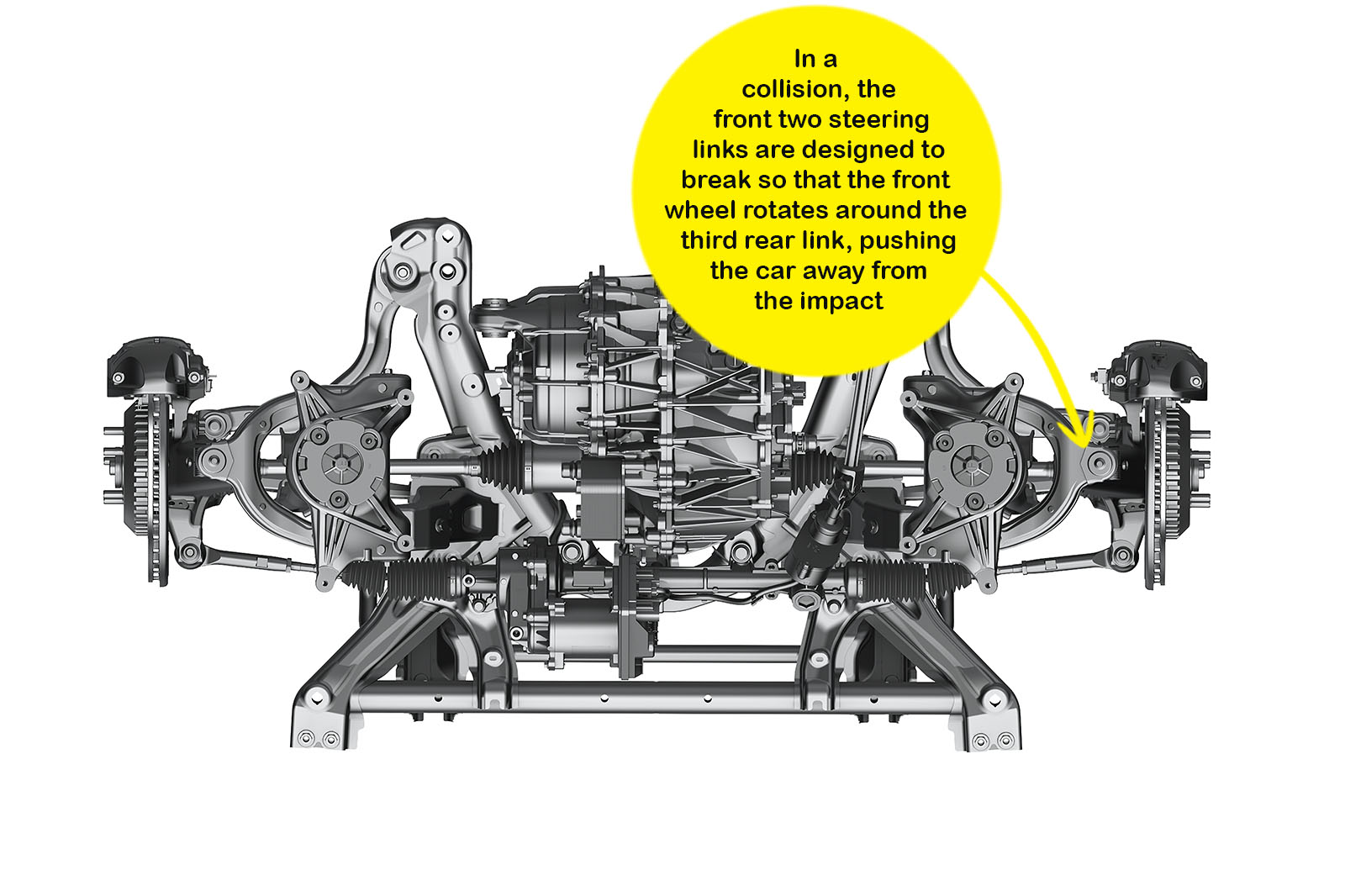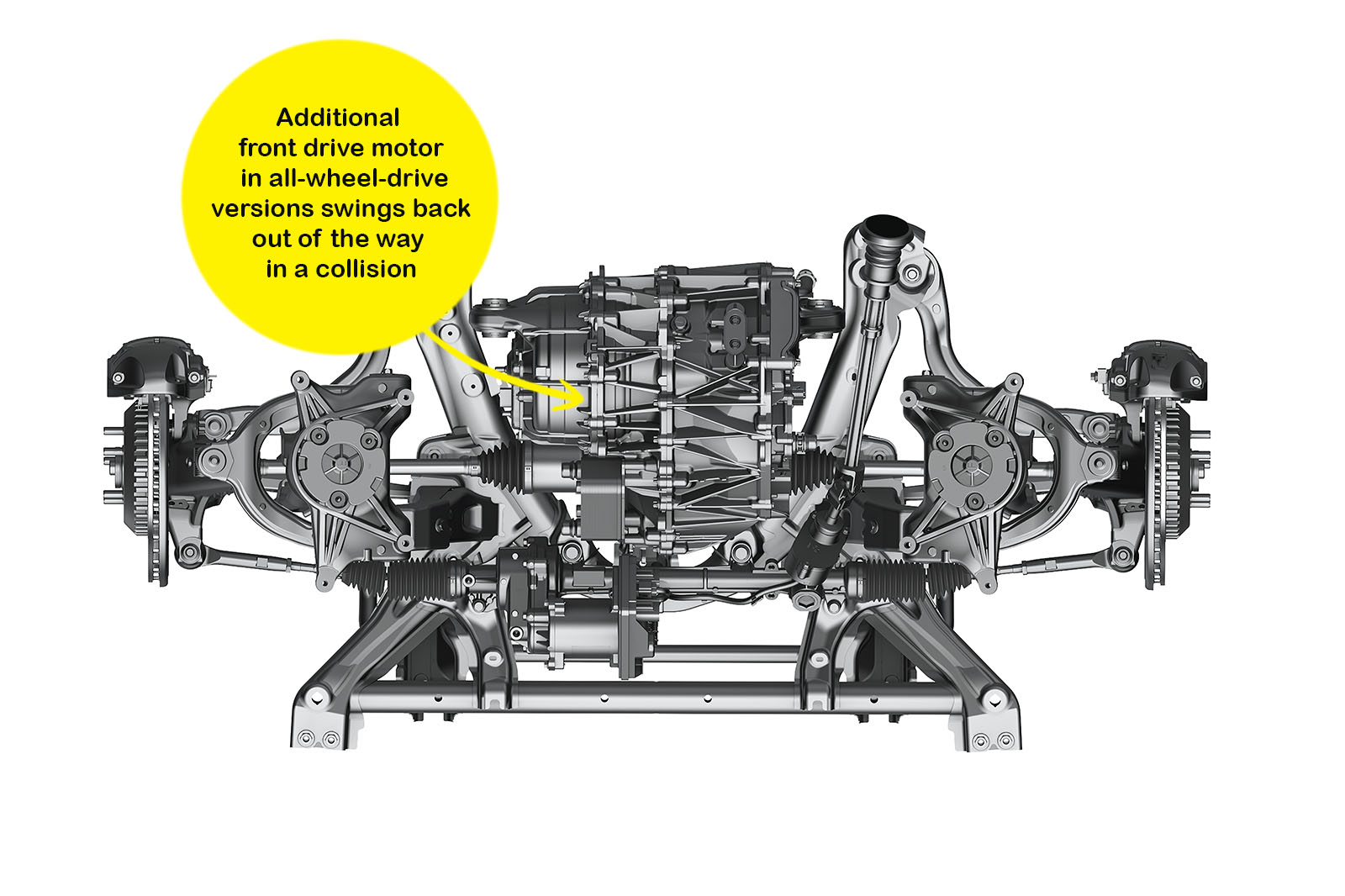Tesla says tyres for a high-performance electric vehicle are challenged in a way that those on a car powered by an internal combustion engine (ICE) are not. A two-wheel-drive Model 3 with a long-range battery weighs just over 1700kg, so tyres have to cope with high loads as well as a 155mph top speed (for dual motor versions) plus continual torque input, either when accelerating or during regenerative braking.
The bulk of mass of an EV is usually located lower than in an ICE-powered car due to the battery packs being mounted under the floor. As a result, there is less vertical force build-up through the outside pair of tyres to generate grip when they corner. To tackle that, Tesla focused on tread stiffness, developing new compounds to deliver the desired combination of cornering grip and low rolling resistance. The tyres are filled with sound-absorbing foam to suppress noise amplified inside the tyre cavity.
Each rear wheel has six degrees of freedom – five links and one damper, similar to a double wishbone – but the links have been split to give better control over the forces transmitted through the tyre’s contact patch. The front suspension has also been designed to provide maximum protection in the stringent, small-overlap frontal collision crash test.

Apart from the direct injury that can occur in accidents, doors can jam and EV batteries can be threatened too. To counter this, sacrificial links are designed to snap when the front wheel and suspension takes a hit.
That allows the wheel to rotate around a third link, moving the wheel outside of the body and pushing the car, the occupants and the batteries away from the point of impact.
The additional motor in all-wheel-drive variants sits on two mounts in the ‘V’ of the front subframe and pivots backwards into a void in the event of a collision. The electric power steering system has a rapid 10:1 ratio, giving two turns lock-to-lock. The system has full redundancy with separate power feeds taken directly from the high-voltage battery, two electronic control modules and two inverters providing ‘hot backup’ if one fails.

